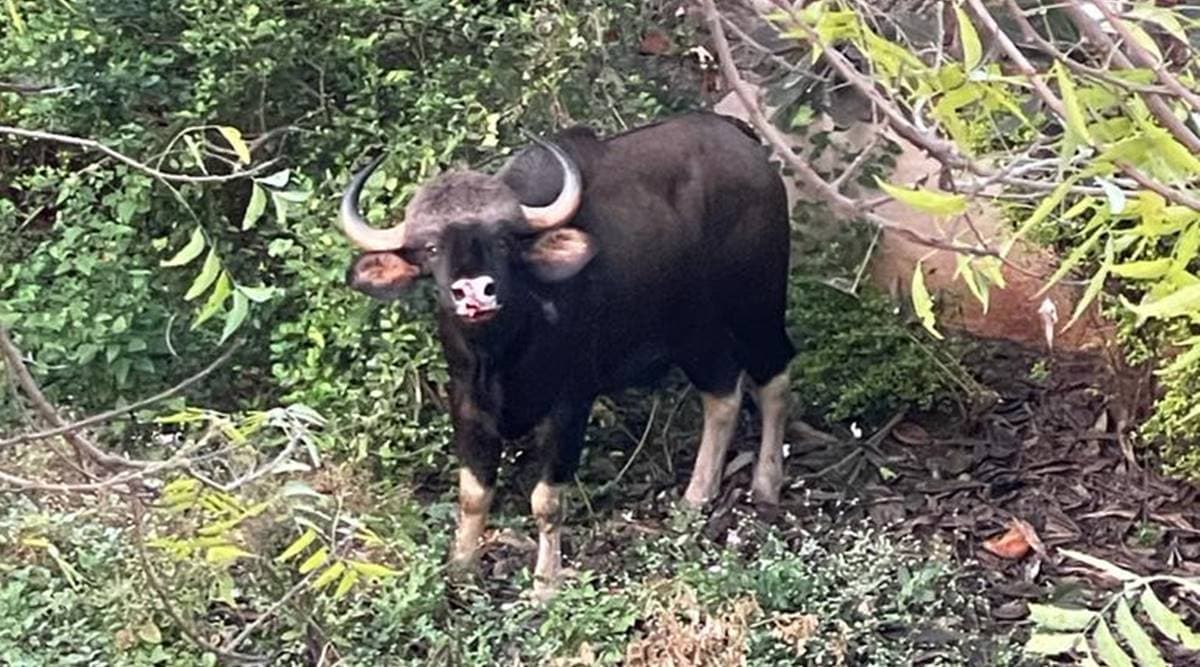 As per the information given by local police, the animal was spotted by some people at the end of an internal road in the Mahatma Society
As per the information given by local police, the animal was spotted by some people at the end of an internal road in the Mahatma SocietyHigh drama ensued in Kothrud area on Wednesday morning after the sighting and subsequent capture of a Gaur or Indian Bison. However, the day ended with the sad news of the wild animal dying, possibly due to stress and exhaustion, caused, among other things, by the unruly crowd of people in the area, Forest department officials said.
The day started with reports of a large wild bovine animal, later confirmed to be a Gaur, being spotted in Mahatma Society in Kothrud at around 7.30 am. The Gaur, an approximately three to four-year-old male, was first seen in an open yard next to a bungalow in Mahatma Society. After spotting the animal, local residents informed the Forest department and Pune Municipal Corporation, which in turn informed the local police.
“We dispatched our team in the area, primarily for crowd control, while Forest department personnel launched rescue efforts for the animal,” said Senior Inspector Sunil Tambe of Kothrud police station.
Given the spot where it was first spotted, the animal must have jumped over the protective wall, which it again did during the operation to rescue it, said officials. The animal had a few injuries, including bleeding injuries in the mouth, which may have been sustained during its transit from the forest area to the city, they said.
Deputy Conservator of Forests for Pune region, Rahul Patil, who co-ordinated the rescue effort, said, “Our teams reached the spot around 8.30 am, about half-an-hour after receiving the call. We initially cordoned off the area. We tried to fire a tranquilising dart but could not succeed. People in this area were cooperative and listened to instructions from the authorities. After a while, the Gaur started running from its initial spot and ran some distance towards Bhusari colony. It is at this place that the crowd was unruly. Because of the behaviour of the crowd, the animal got even more agitated and started running helter-skelter. It again ran towards the same locality where it was first spotted… it is this point that we could successfully tranquilise it and capture it using nets, some time between 12.30 pm and 1 pm.”
Officials said that during the four-and-a-half hours of efforts to rescue the Gaur, it traversed an area of 3 km, mostly in panic.
“After capturing it, we realised that the body temperature of the Gaur has risen significantly than normal, a sign of stress and exhaustion. We decided to release the animal in the Tamhini forest area after treating it at the Forest department’s transit treatment centre. It is at this centre that the animal breathed its last. An autopsy was subsequently performed… it prima facie suggests that the cause of death could be due to respiratory insufficiency leading to cardiovascular failure, shock and death. However, the final cause of death will be given after receipt of laboratory reports. The speculations that tranquilising darts could have caused the death have no basis. The dart successfully hit the animal only once,” added Patil.
When asked, the Forest department official said that the animal could have ventured into the residential area from adjoining forest areas of Mulshi and Tamhini. While sightings of Gaurs in these forests are not very common, officials cited incidents in the past when Gaurs travel long distances from forests in Mahabaleshwar in Satara via connecting corridors to enter the forest areas adjoining Pune city.
Speaking to The Indian Express, Pune-based wildlife researcher Dharmaraj Patil said, “In 2015, the state government came up with a stand operating procedure for handling human-Gaur conflict situations. It is extremely crucial that these SOPs are adhered to while dealing with these very shy animals. While one priority should be to properly train and equip the Forest department staff, it is even more important to create awareness among people about wildlife and sensitise them about their behaviour during such situations.”